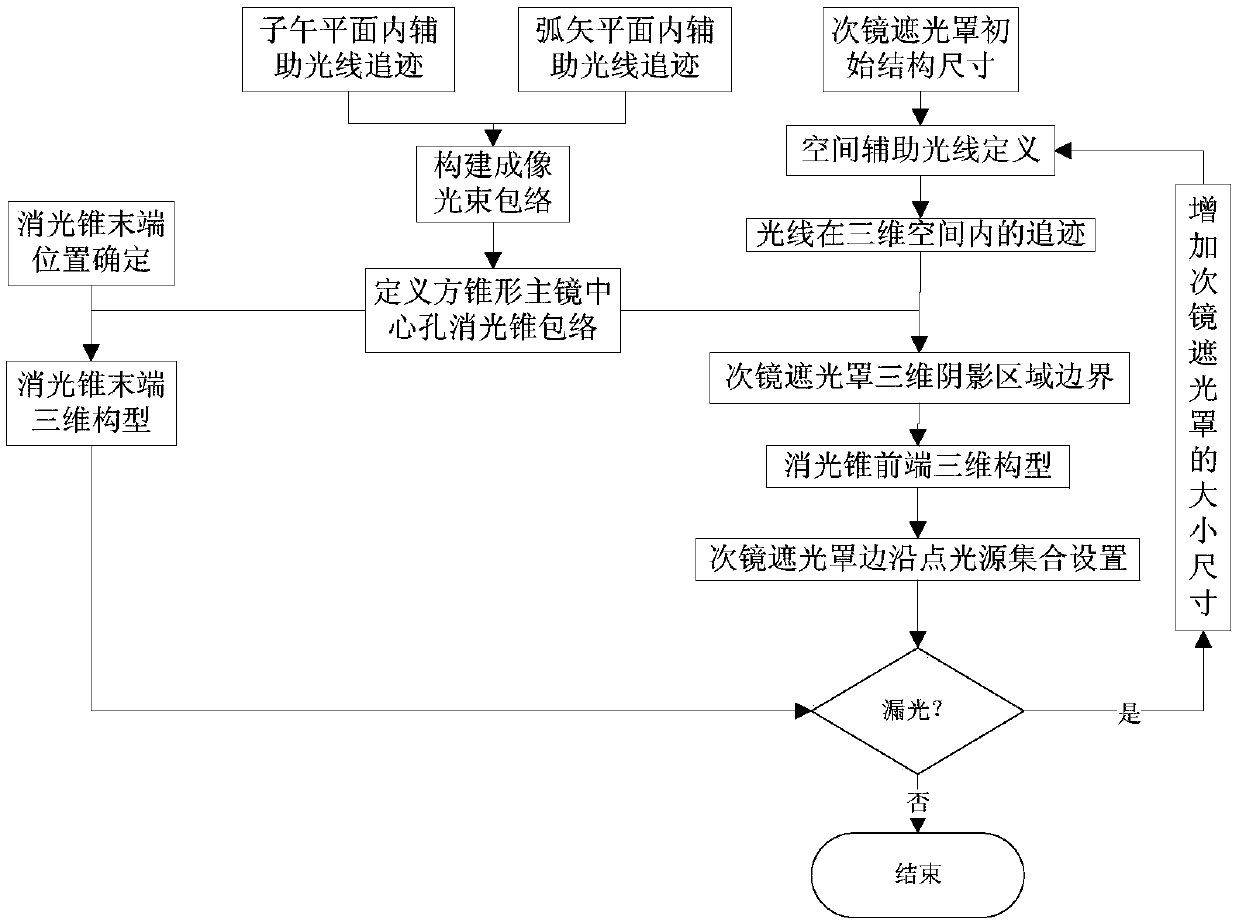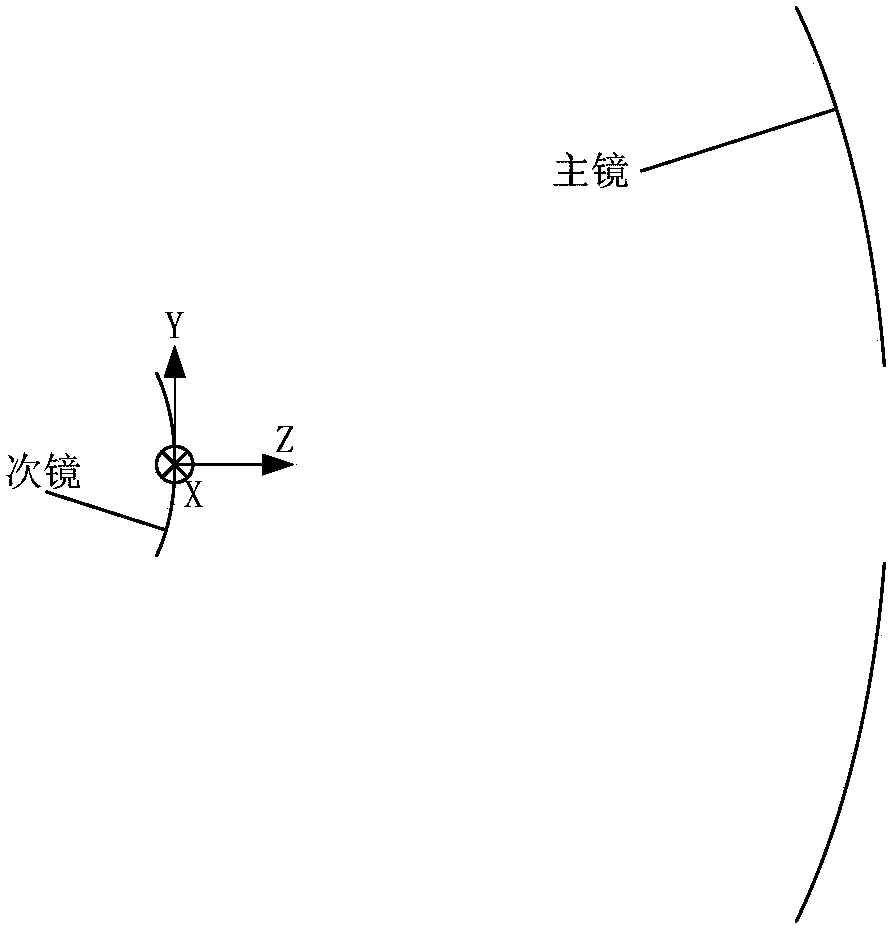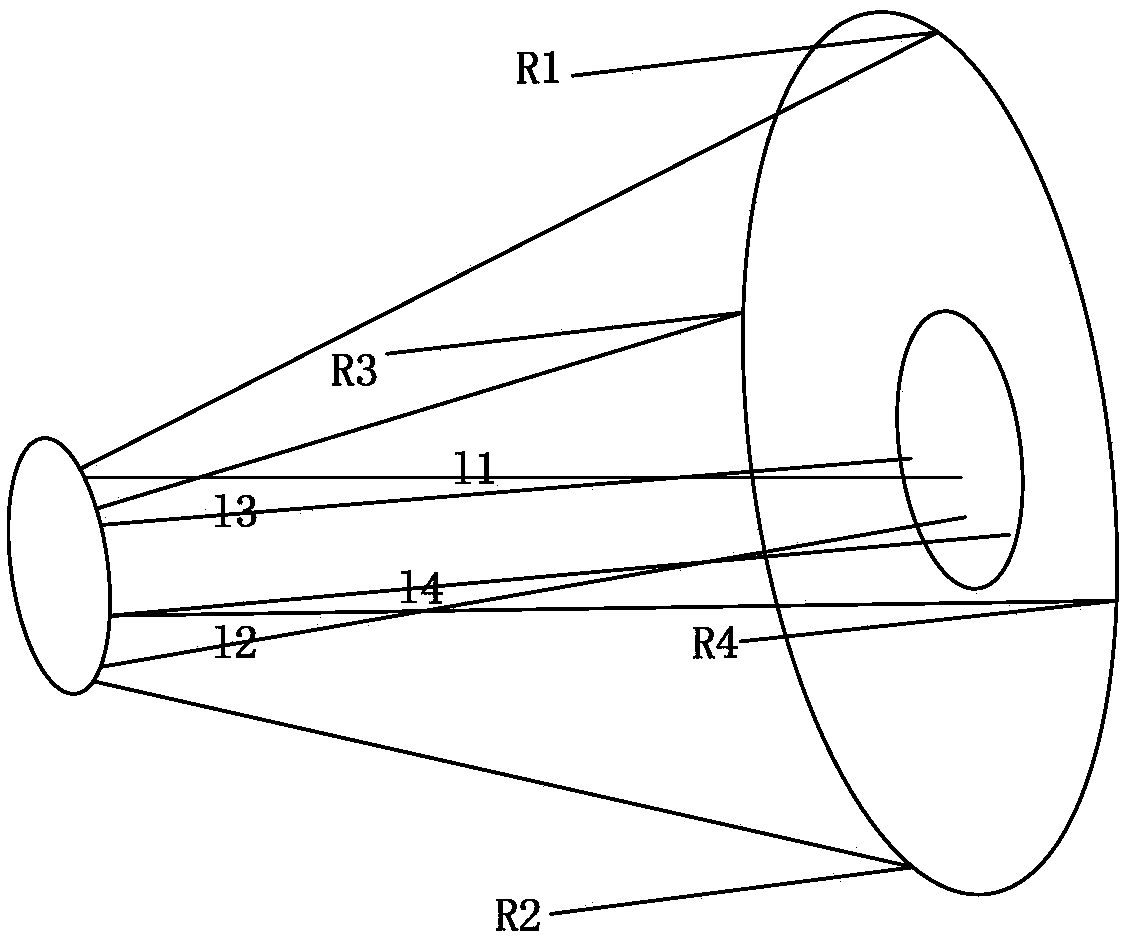Space-ray-tracing-based method for designing secondary mirror hood and square-tapered extinction cone
A technology of ray tracing and design method, which is applied in the field of aerospace remote sensing, can solve problems such as occlusion, and achieve the effects of volume reduction, size minimization, and weight reduction
- Summary
- Abstract
- Description
- Claims
- Application Information
AI Technical Summary
Problems solved by technology
Method used
Image
Examples
Embodiment Construction
[0058] For the visible spectrum, the field of view in the X direction is ±1.0°, the field of view in the Y direction is -1~-0.6°, and the RC system with an entrance pupil diameter of 359.6mm is used for the extinction cone of the secondary mirror hood and the central hole of the square conical primary mirror. Joint design.
[0059] Such as figure 1 Shown, concrete steps of the present invention are as follows:
[0060] (1) According to figure 2 As shown, a Cartesian rectangular coordinate system is established;
[0061] (2) Based on the tracing results of the four auxiliary rays in the meridional and sagittal planes, the boundary of the extinction cone of the central hole of the square conical primary mirror is calculated
[0062] build as image 3 The equations of the four auxiliary rays R1, R2, R3 and R4 shown are:
[0063]
[0064]
[0065]
[0066]
[0067] Tracing the 4 auxiliary rays in Fred, the linear equations l1', l2', l3' and l4' of the 4 rays refl...
PUM
 Login to View More
Login to View More Abstract
Description
Claims
Application Information
 Login to View More
Login to View More - R&D
- Intellectual Property
- Life Sciences
- Materials
- Tech Scout
- Unparalleled Data Quality
- Higher Quality Content
- 60% Fewer Hallucinations
Browse by: Latest US Patents, China's latest patents, Technical Efficacy Thesaurus, Application Domain, Technology Topic, Popular Technical Reports.
© 2025 PatSnap. All rights reserved.Legal|Privacy policy|Modern Slavery Act Transparency Statement|Sitemap|About US| Contact US: help@patsnap.com



